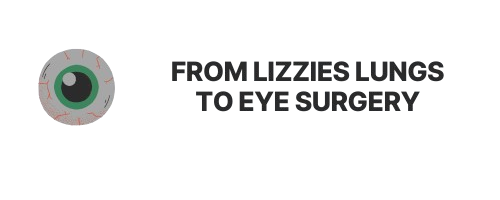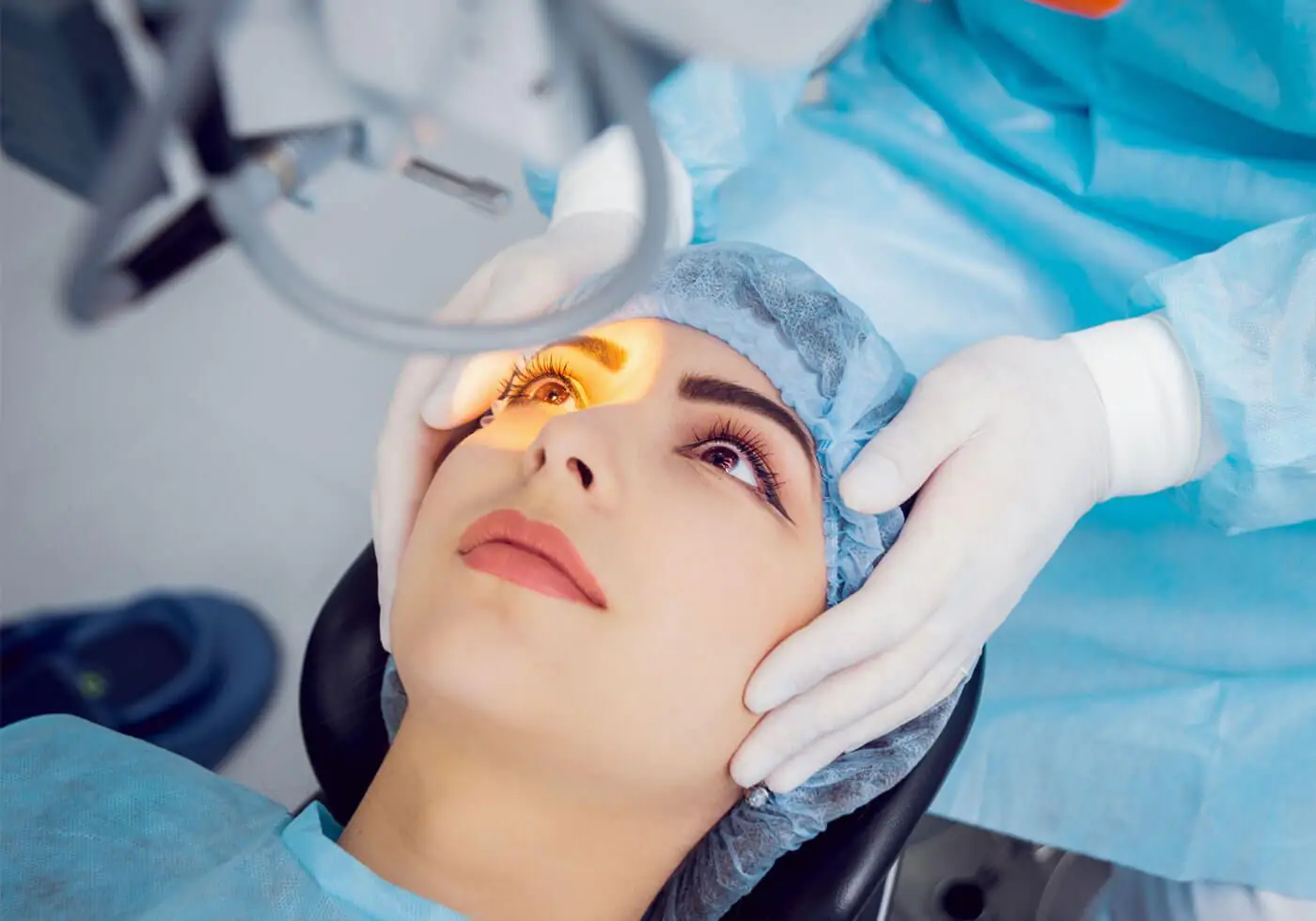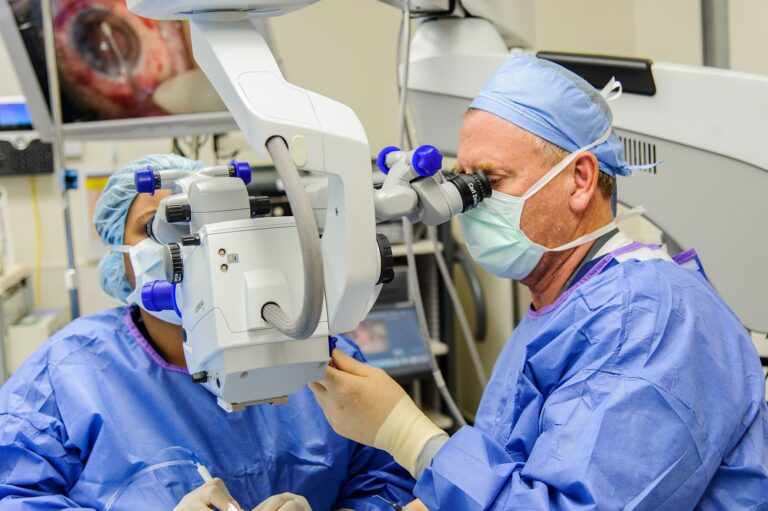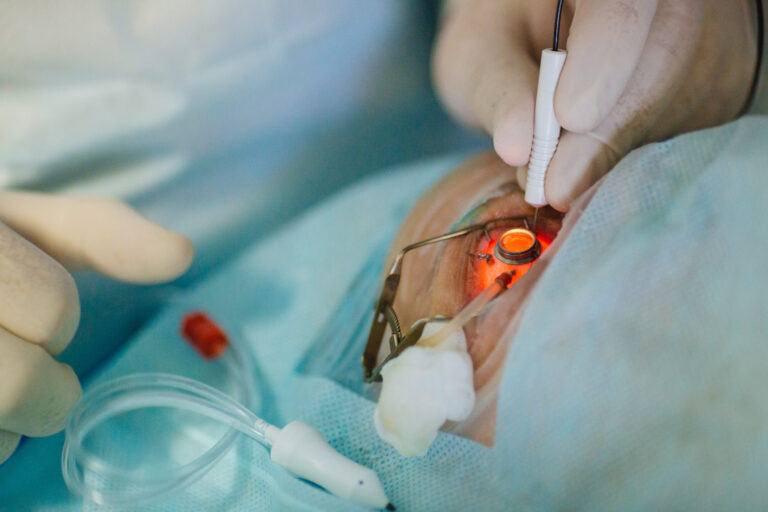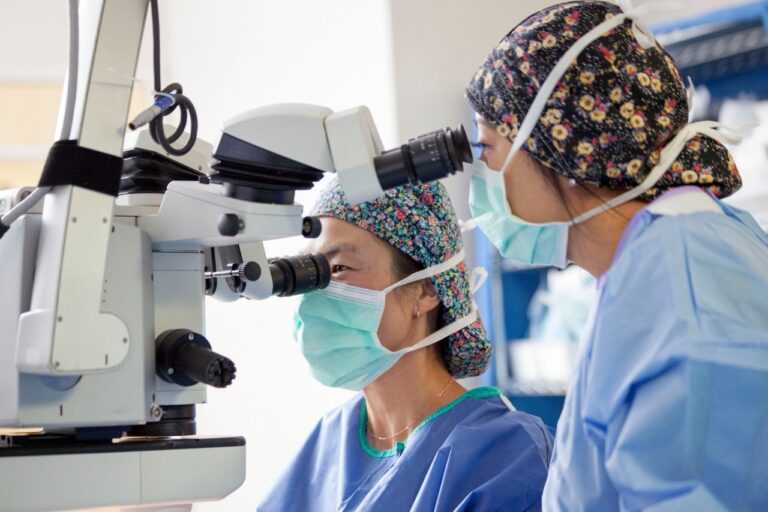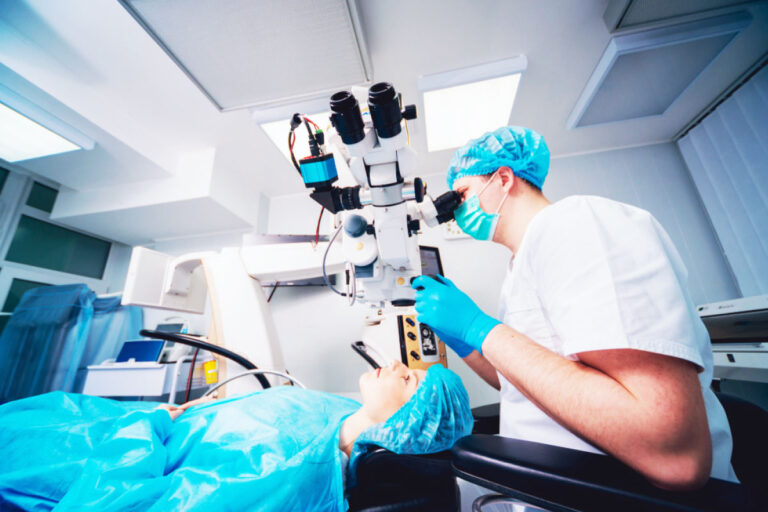Top Benefits of Modern Cataract Surgery for Long-Lasting Vision Correction
Understanding Cataract Surgery
What is Cataract Surgery?
Cataract surgery is a surgical procedure aimed at removing the cloudy lens of the eye, known as a cataract, and replacing it with an artificial lens called an intraocular lens (IOL). This condition is common among older adults, where the natural lens gradually becomes opaque, leading to blurred vision and, if untreated, potential blindness. The procedure is generally performed on an outpatient basis and is considered one of the most effective surgical interventions in medicine.
The cataract surgery typically involves making a small incision in the eye, through which the surgeon uses ultrasound waves to break up the cataract and gently suction the pieces out. Once the cataract is removed, the artificial lens is inserted. The advancements in technology have made this process both safe and efficient, with most patients experiencing rapid improvement in their vision. Post-operative care is also crucial; patients are often prescribed eye drops to prevent infection and reduce inflammation, and regular follow-up appointments are scheduled to monitor healing and visual acuity.
Modern Advances in Cataract Surgery
In recent years, there have been significant advancements in cataract surgery techniques and technologies. One notable development is the introduction of femtosecond laser technology, which allows for a more precise and controlled surgical procedure compared to traditional methods. This technology enhances the safety and effectiveness of cataract surgery by making incisions with high accuracy. The use of lasers also minimizes the amount of energy needed to break up the cataract, which can lead to reduced trauma to the surrounding eye tissues and a quicker recovery time for patients.
Additionally, the availability of advanced intraocular lenses, including multifocal and toric lenses, provides patients with more options tailored to their specific vision needs. These lenses can correct not only distance vision but also minimize the need for glasses for both near and intermediate vision. Furthermore, the integration of advanced diagnostic imaging techniques before surgery ensures that each patient receives personalized treatment, improving overall surgical outcomes. The use of optical coherence tomography (OCT) allows surgeons to obtain detailed images of the eye’s structure, enabling them to plan the surgery with greater precision. As a result, patients are not only able to enjoy improved vision post-surgery but also experience a higher quality of life, as they can engage in activities they may have previously found challenging due to their cataracts.
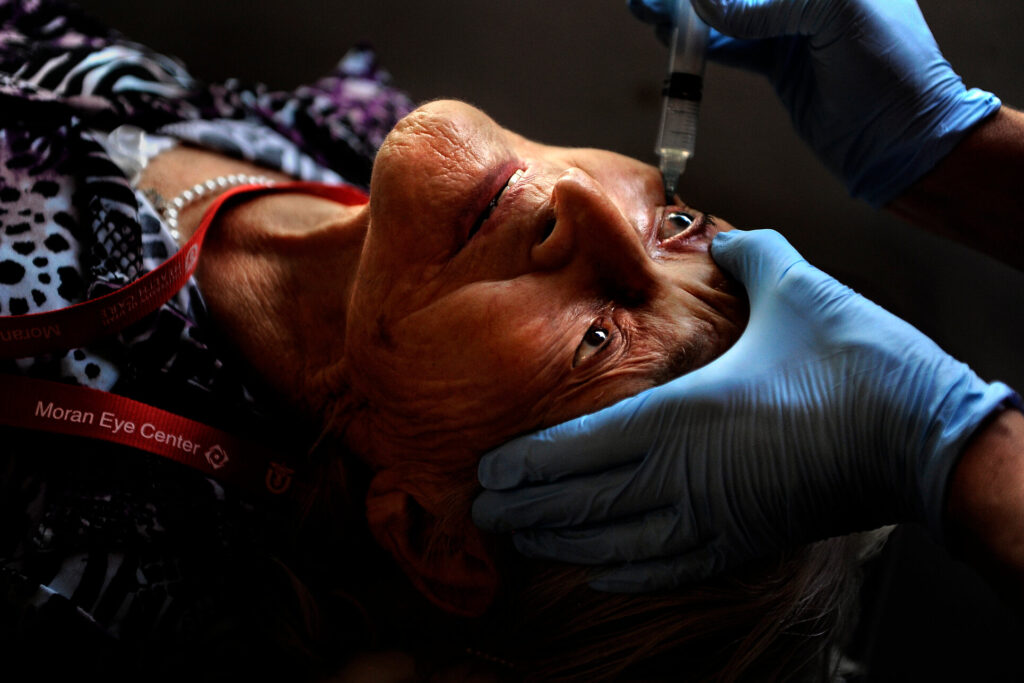
The Importance of Vision Correction
The Role of Vision in Daily Life
Vision plays a crucial role in our daily lives, influencing how we interact with the world around us. From reading and driving to enjoying recreational activities, clear vision is essential for maintaining independence and quality of life. When vision deteriorates due to cataracts, everyday tasks can become challenging, which can lead to frustration and a decrease in overall well-being.
Moreover, good vision is integral to participating in various social and occupational activities. Poor eyesight can hinder one’s ability to engage with family, friends, and community, potentially leading to isolation. Addressing vision problems through procedures like cataract surgery can greatly enhance an individual’s ability to enjoy life to the fullest. The ability to see clearly allows for the enjoyment of simple pleasures, such as watching a sunset, reading a favorite book, or even recognizing the faces of loved ones. These experiences are vital not only for personal happiness but also for fostering meaningful connections with others.
In addition, advancements in vision correction technology have made it easier than ever for individuals to regain their sight. Innovations such as laser-assisted cataract surgery and premium intraocular lenses provide patients with options that can significantly improve their visual outcomes. This not only restores their ability to perform daily tasks but also opens up new opportunities for hobbies and activities that may have been previously difficult or impossible. The freedom that comes with clear vision can lead to a more active lifestyle, encouraging individuals to explore new interests and engage more fully with their surroundings. Read more about the importance of vision in daily life at https://www.uopeople.edu/blog/what-is-vision-and-its-importance/
Long-Term Implications of Poor Vision
Leaving cataracts untreated can lead to long-term consequences that extend far beyond impaired sight. Individuals may face increased risks of falls and accidents due to limited depth perception and contrast sensitivity. Moreover, untreated cataracts can exacerbate existing conditions such as glaucoma or diabetic retinopathy, leading to more severe ocular complications. The cumulative effect of these issues can result in a downward spiral of health, where the inability to see clearly contributes to a sedentary lifestyle, further impacting physical health and mobility.
Additionally, vision impairment can have an emotional and psychological impact. Many individuals with poor vision report feelings of frustration, helplessness, and depression. The struggle to navigate a world that is becoming increasingly visual can lead to anxiety and social withdrawal. Addressing cataracts through effective surgical options can not only prevent these consequences but also rejuvenate one’s outlook on life, enhancing mental health and emotional well-being. The restoration of sight can reignite passions and interests that may have been sidelined, allowing individuals to reconnect with their hobbies, pursue new goals, and engage in social activities that enrich their lives.
Furthermore, the economic implications of untreated vision problems cannot be overlooked. Poor vision can lead to decreased productivity at work, increased healthcare costs due to accidents or related health issues, and even loss of employment opportunities. By investing in vision correction, individuals not only improve their personal quality of life but also contribute positively to their communities and the economy. The ripple effect of improved vision extends beyond the individual, fostering a healthier, more active, and engaged society.
Key Benefits of Modern Cataract Surgery
Improved Vision Quality
One of the most significant benefits of modern cataract surgery is the improvement in vision quality. Following the procedure, most patients report having clearer and sharper vision. The removal of the cataract allows for better light transmission, which can dramatically enhance visual acuity.
Patients can often see colors more vividly and with greater contrast, making everyday activities like reading, driving, and even watching television more enjoyable. In many cases, individuals who have undergone cataract surgery are able to return to normal activities within a few days, significantly improving their quality of life. Moreover, the advancements in surgical techniques and intraocular lens (IOL) technology mean that patients can also experience improved night vision, reducing the glare and halos that often accompany cataracts. This enhancement is particularly beneficial for those who enjoy nighttime activities or need to drive after dark.
Reduced Dependence on Glasses or Contact Lenses
Another key advantage of contemporary cataract surgery is the potential for reduced dependence on corrective eyewear. With the use of advanced IOLs, many patients can achieve a level of vision that minimizes or eliminates the need for glasses or contact lenses post-surgery.
For instance, multifocal lenses can provide a range of vision, allowing individuals to see well at varying distances without the constant need to switch between pairs of glasses. This freedom can be particularly liberating for those who have worn glasses for many years, offering a more active and unencumbered lifestyle. Additionally, some patients opt for specialized lenses, such as toric lenses, which can correct astigmatism, further enhancing their visual clarity and reducing reliance on corrective lenses. The ability to engage in activities such as hiking, swimming, or playing sports without the hassle of glasses can significantly boost a person’s confidence and overall enjoyment of life.
Quick Recovery Time
Modern cataract surgery is known for its minimal recovery time. Unlike traditional surgical methods that might have required extended healing periods, many of today’s procedures are performed using minimally invasive techniques that allow for swifter recovery.
Patients typically experience less discomfort, reduced swelling, and can often return to their daily activities shortly after the procedure. Follow-up appointments usually occur within a few days to assess healing and adjust prescriptions if necessary. This quick recovery allows individuals to resume their normal routines and enjoy life without prolonged downtime. Furthermore, many surgeons now utilize advanced imaging technologies during the procedure, which not only enhances precision but also contributes to a more efficient healing process. As a result, patients often find that they can enjoy their favorite hobbies and social engagements much sooner than they anticipated, making the entire experience of cataract surgery a positive and life-changing event. To learn more about healing from surgeries click here.
Long-Lasting Effects of Cataract Surgery
Sustainability of Vision Correction
The effects of cataract surgery are often long-lasting, with many patients enjoying improved vision for years following the procedure. The replacement lens is designed to be durable and stable within the eye, providing consistent visual acuity. Regular eye check-ups can help monitor eye health, but the success rate of cataract surgery is remarkably high, with most patients retaining functional vision well into their later years.
Moreover, the advancements in lens technology mean that options such as accommodating and multifocal lenses allow individuals to experience sustained vision correction across multiple distances for many years, making cataract surgery not just a temporary fix but a long-term solution for clearer vision.
Impact on Overall Eye Health
Cataract surgery not only improves vision but also has a positive impact on overall eye health. By removing the cataract, the procedure reduces the stress on the eye and can help prevent the progression of other ocular diseases. For example, patients who undergo cataract surgery are noted to have a lower risk of developing other complications like glaucoma, diabetic retinopathy, and even age-related macular degeneration.
Maintaining optimal eye health post-surgery typically involves regular eye examinations and adopting a healthy lifestyle, including proper nutrition, UV protection, and avoiding smoking. These steps further enhance the long-lasting benefits of cataract surgery, contributing to improved vision and eye health overall.
Making the Decision for Cataract Surgery
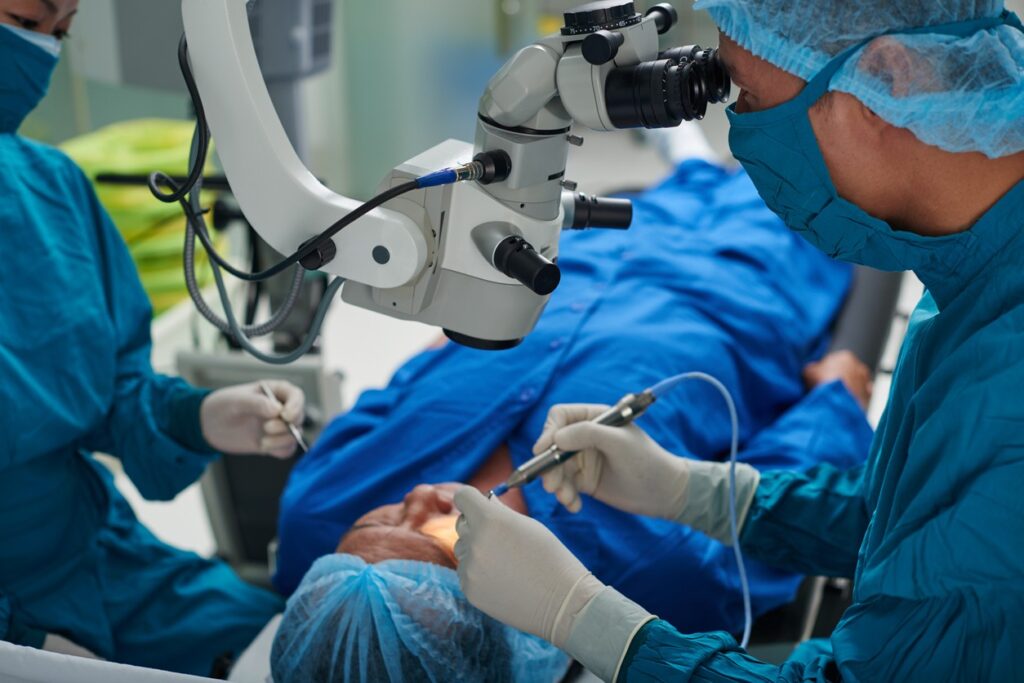
Evaluating Your Eye Health
Deciding to undergo cataract surgery begins with a thorough evaluation of your eye health. Patients should consider scheduling a comprehensive eye exam with an ophthalmologist who specializes in cataracts. During this appointment, the doctor will assess the severity of the cataract and how it is affecting your vision.
It is essential to communicate all visual challenges you’re facing. This discussion will help the physician determine whether surgery is advisable at this time or whether other treatments may be more appropriate. Factors such as age, general health, and lifestyle preferences will also play a crucial role in this evaluation.
Discussing Options with Your Eye Doctor
Once you have a clear understanding of your eye health, it’s important to discuss your options with your eye doctor. They can provide detailed information on the various types of intraocular lenses available and help you choose the one that best meets your lifestyle needs.
Your physician can explain the pros and cons of each lens type—standard IOLs, multifocal, and toric lenses—and how each may impact your vision post-surgery. Having an open and honest dialogue will empower you to make informed decisions about your treatment and prepare for the surgical experience ahead.
Preparing for Cataract Surgery
Preparation for cataract surgery involves several steps to ensure a successful outcome. Your healthcare team will provide specific instructions regarding pre-operative care, which may include adjustments to current medications and recommendations to avoid certain activities in the days leading up to your procedure.
On the day of surgery, it’s usually advisable to arrange for someone to accompany you, as you may be advised not to drive immediately after the procedure. Taking it easy for the first few days post-surgery will optimize your recovery, and following your doctor’s advice will help ensure the best possible results.
In conclusion, modern cataract surgery offers numerous benefits that enhance vision quality and overall eye health. With advancements in technology and techniques, patients can enjoy long-lasting results that improve their quality of life significantly.
Related : Eye Surgery LASIK: Is It the Right Choice for Your Vision?
